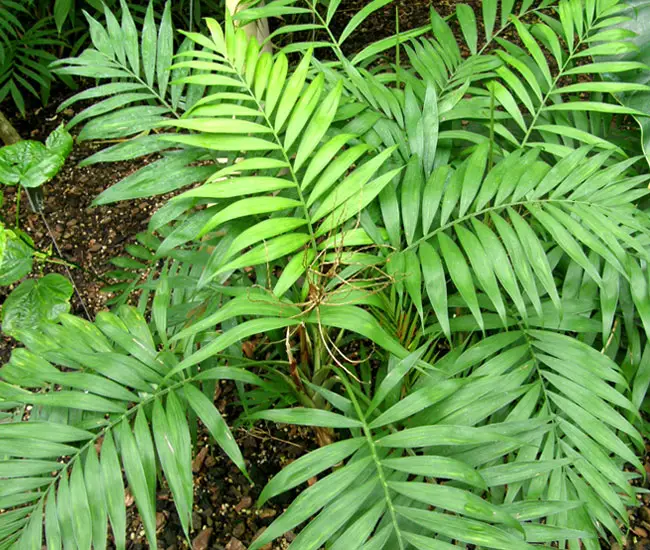
The Parlor Palm Tree, scientifically known as Chamaedorea elegans, comes from Guatemala. This small, slow-growing palm is a fantastic choice for compact gardens and shines as one of the best indoor plants.
This palm is incredibly low-maintenance and easy to nurture. You might notice new shoots sprouting at the plant’s base, lending it a lush, dense appearance and offering opportunities for propagation.
Quick Facts:
| Scientific name: | Chamaedorea elegans |
| Common names: | Parlor Palm, Parlour Palm, Neanthe Palm, Table Top Palm, Neanthe Bella. |
| Origin: | Native to Guatemala. |
| Growth Rate: | Slow. This palm can slowly grow up to tall 6 ft and 3 ft wide. |
| Cold Tolerance: | USDA Zones 10b (35 to 40 F) to 11 (above 40 F). |
| Light Req: | Partial shade to Shade. |
| Water Req: | Moderate. |
| Soil Req: | Widely adaptable |
| Fruit: | Yes. Black. Not edible. |
| Propagation: | By seed, germinating irregularly over a year. Air layering. |
Parlor Palm Identifying Characteristics
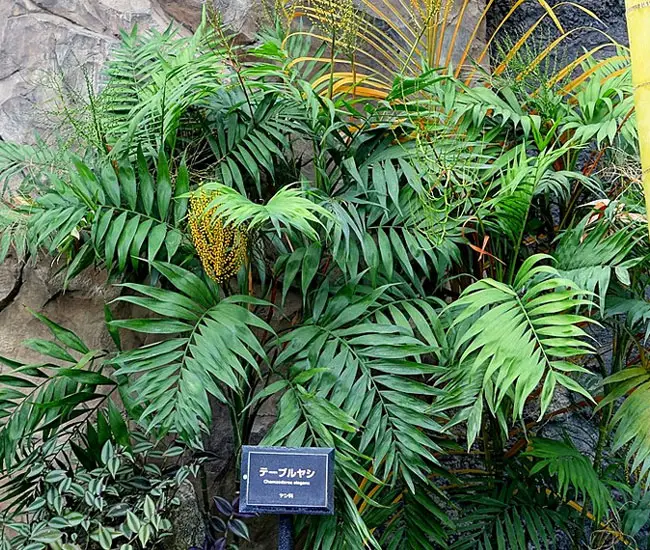
The Parlor Palm Tree typically reaches heights of up to 6 feet, boasting slender, cane-like stems adorned with distinctive leaf scars. Its dark green, pinnate leaves, measuring about 18-24 inches in length, are divided into opposite pairs of leaflets.
Parlor Palm Flowers and Fruits
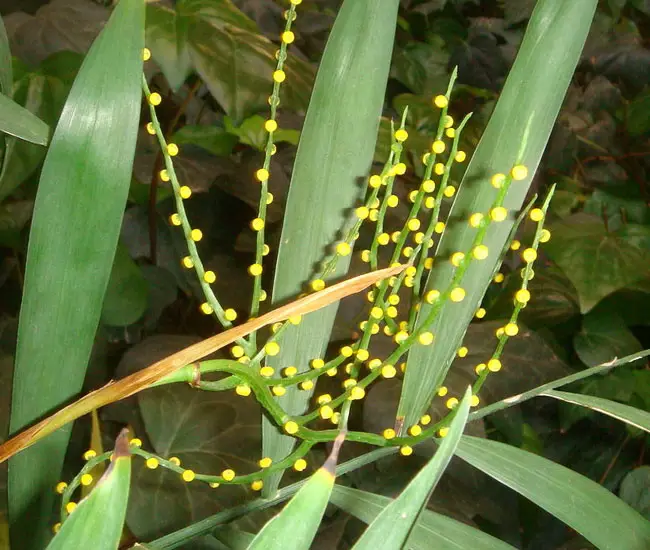
In early spring, this palm treats you to small yellow flowers. Interestingly, male and female flowers reside on separate plants. Following the blooms, you’ll find small, round green fruits that transform into a striking black when fully ripe.
How To Care For Parlor Palm
This palm has a gradual growth rate, eventually reaching heights of 6 feet and a width of 3 feet. Its cold hardiness allows it to withstand temperatures as low as 25°F, making it an excellent choice for USDA Zones 10b (ranging from 35 to 40°F) to 11 (above 40°F). It thrives in partial shade or full shade and thrives in well-drained, moist soil.
To ensure your Parlor Palm remains healthy and free from nutritional deficiencies, apply a high-quality palm fertilizer with a continuous-release formula twice a year during the growing season.
Propagation of the Parlor Palm is typically done through seeds, offering you the opportunity to expand your collection or share its beauty with fellow enthusiasts.
Parlor Palm Tree Pictures
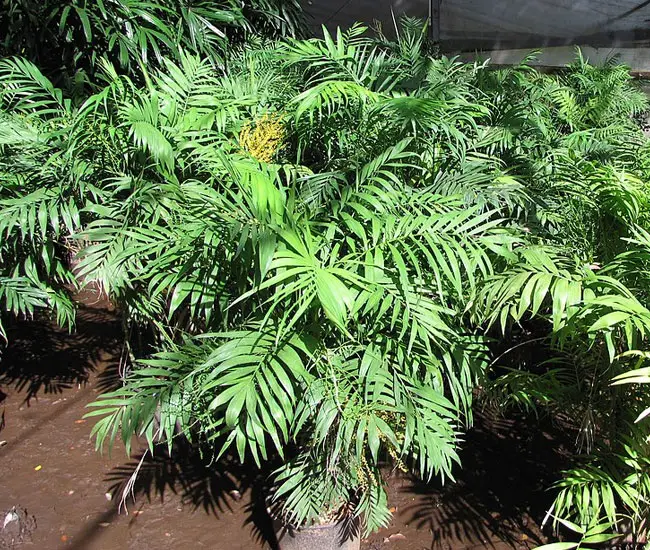
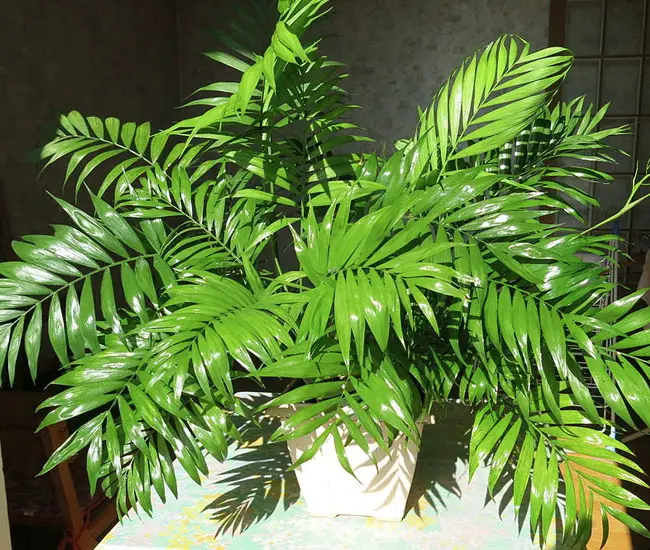
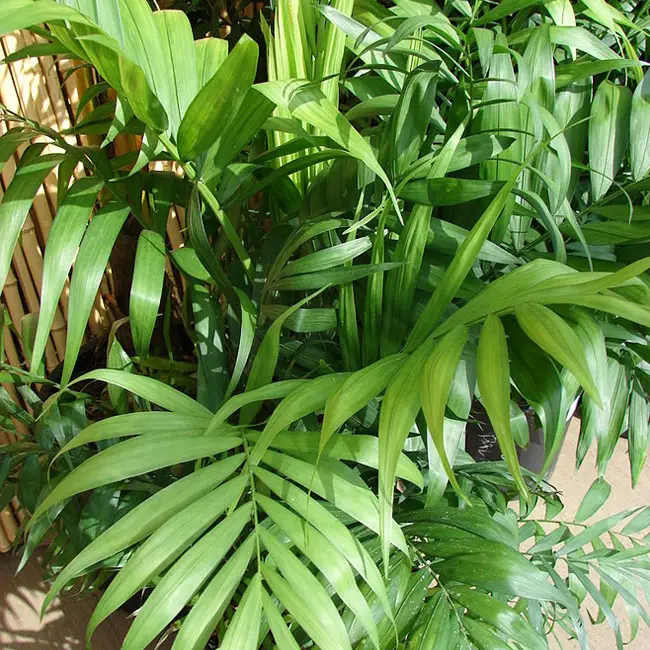
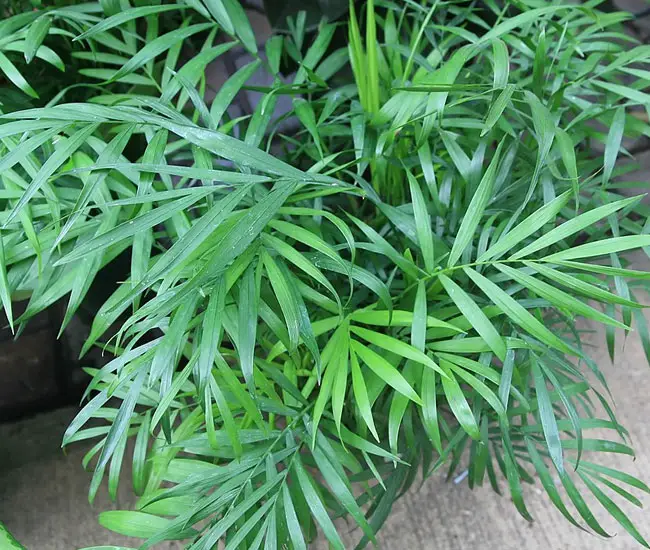
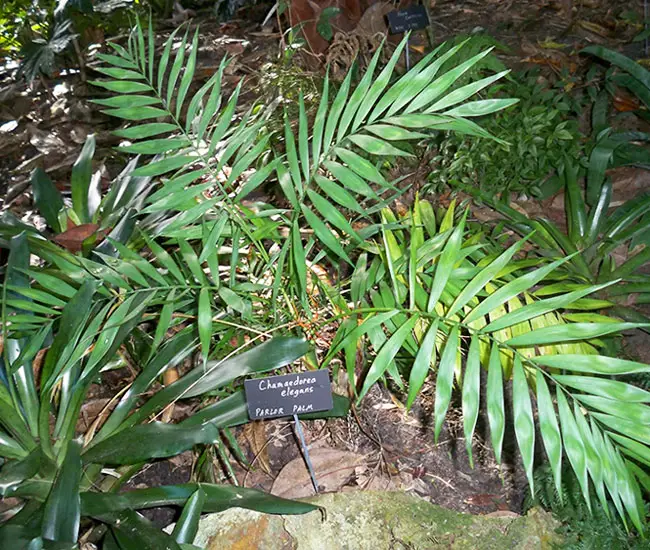
More information can be found on EDIS and Floridata sites.

Comments are closed.